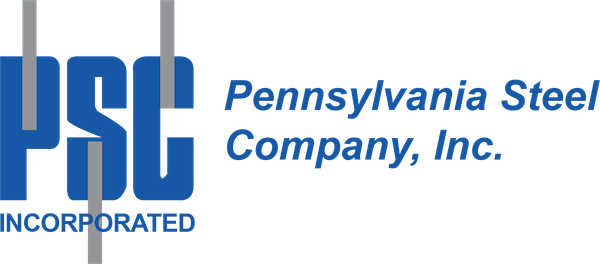Alloy Steel vs Stainless Steel: Which Is Better for Your Project?
The choice you make between alloy steel and stainless steel for your project is critical. If you are unsure of which one is better, you’re not alone. Deciding between alloy and stainless steel can be tricky. Fortunately, help is available.
Pennsylvania Steel is one of the top distributors of metal products in the Eastern US. Today, we’re sharing factors to help you consider the alloy vs stainless steel options.
Metal Properties
Alloy and stainless steel have different properties. With a clear understanding of these properties, you can pick out a steel product that’ll help you achieve your desired project results.
Properties of Alloy Steel
Alloy steel’s properties include:
- Strength
- Toughness
- Corrosion resistance
- Resistance to wear and tear
Alloy steel is iron-based, with at least one element (alloys) mixed in. Elements help increase the steel’s properties, like hardness or corrosion resistance. They can make up 1-50% of the steel’s composition.
Properties of Stainless Steel
Alternatively, stainless steel is iron-based. It contains a minimum of 10% chromium that, when it’s exposed to oxygen, creates a protective film. Along with this, stainless steel maintains its strength, even in extremely high or low temperatures. It also is easy to clean and doesn’t support the growth of bacteria.
Steel Types
There is no such thing as one-size-fits-all steel. Learn about the types of alloy and stainless steel as you evaluate steel options for your project.
Types of Alloy Steel
Alloy steel can be made up of many elements, including:
- Chromium: Hardens the metal.
- Manganese: Makes the metal less brittle.
- Nickel: Improves the metal’s corrosion resistance.
- Tungsten: Increases the metal’s resistance to heat.
Both high- and low-alloy steel are available. High-alloy steel contains many elements. Comparatively, low-alloy steel usually has 1-5% of alloying elements.
Types of Stainless Steel
Stainless steel can be combined with elements, including:
- Carbon: Makes the metal durable.
- Chromium: Improves the metal’s corrosion resistance.
- Nickel: Increases the metal’s ductility and formability.
The main categories of stainless steel are:
- Austenitic: Contains chromium and is often used in items that are corrosion-resistant.
- Ferritic: Has a low nickel content compared to other types of stainless steel and is intended for use in items that can be hardened via cold forming.
- Martensitic: Has a high carbon content and high tensile strength.
- Duplex: Includes equal parts of austenite and ferrite.
- Precipitation-Hardening: Consists of chromium, nickel, and other elements that can form a precipitate.
Grades
Grades are used to classify steel based on use case. They account for the chemical composition, treatment, and mechanical qualities of steel, helping you choose the right product for your application.
Grades of Alloy Steel
4140 and 4150 are two common alloy steel grades. Consisting of roughly .95% chromium and .20% molybdenum, these are low-cost and general-purpose.
Among fee-machining alloy bars, 41L40 is the most common grade. This contains .4% carbon and up to .35% lead.
For case hardening alloys, 8620 is common. It consists of .55% nickel, .5% chromium, and .25% molybdenum.
A high-alloy steel, 4340, consists of 1.8% nickel, .8% chromium, and .25% molybdenum. Its most common use is the manufacturing of parts operating under duress.
Grades of Stainless Steel
Stainless steel grades include:
- 301: Consists of chromium and nickel.
- 302: Contains a high carbon level, making it resistant to solvents, chemicals, and acids.
- 303: Has corrosive-resistant properties and offers a great option for machinability.
- 316: Has a high tensile strength.
- 321: Includes titanium to protect against corrosion and high temperatures.
Applications
Just because you use alloy or stainless steel during your project doesn’t mean you’ll get the results you want. Choose alloy or stainless steel that has everything you need to accomplish the project results you want.
Alloy Steel Applications
You can forge alloy steel into bars, coils, and other shapes. Along with this, this steel can be used in many ways, including the construction of:
- Car parts
- Bridges
- Boilers
- Turbines
- Nuclear reactors
- Pipelines
- Drilling equipment
- Hand tools
Stainless Steel Applications
Stainless steel uses include:
- Dental and surgical instruments
- Operating tables
- Kitchen accessories and cookware
- Aircraft
- Gas turbines
- Vehicle components
Should You Use Alloy or Stainless Steel for Your Project?
It depends. Alloy steel is the way to go if you need a metal that’s strong, corrosion-resistant, affordable, and easy to use. For a durable, versatile, and low-maintenance alternative, choose stainless over alloy steel.
Here are steel factors to consider as you choose between alloy or stainless varieties.
Tensile Strength
This is a measurement of the steel’s ability to deal with tensile stress before it breaks. Alloy steel tends to have a higher tensile strength versus stainless steel.
Corrosion Resistance
Stainless steel is more resistant to corrosion than alloy steel. However, stainless steel can still rust if exposed to some conditions, like excessive heat or chemicals.
Hardness
Alloy steel has a Brinwell hardness ranging between 200HB and 600HB. Stainless steel’s Brinwell hardness falls between 150HB and 300HB.
Ductility
Alloy steel has a higher ductility than stainless steel. This makes alloy a better option if you need to reshape metal.
Impact Resistance
Go with alloy if you need steel that offers outstanding impact resistance, as stainless steel is more likely than alloy to break if it’s exposed to shock or impact.
Fatigue Strength
This refers to a metal’s ability to resist stress based on a number of cycles. Most stainless steel products have a lower fatigue strength in contrast to alloy steel ones.
Cost
Alloy steel tends to be more affordable than stainless steel. The prices of both fluctuate based on supply and demand and other factors. With any project, it’s never a good idea to compromise quality for price on steel. If you do, you risk purchasing steel products that put your project in danger.
Want Help as You Choose Between Alloy and Stainless Steel?
One of the top steel companies in Cleveland, Ohio and other areas of the Eastern US, Pennsylvania Steel Co. is happy to help you find the right alloy and stainless steel products for your project.
We’re an alloy and stainless steel distributor that proudly serves clients in many parts of the United States, including:
- Ohio
- Pennsylvania
- Richmond, Virginia
- Charlotte, North Carolina
- New England
- Long Island
Our friendly, knowledgeable team will teach you about our alloy and stainless steel products. We’ll help you choose products that’ll serve you well long into the future.
Find a PA Steel location near you for alloy steel or stainless steel.






